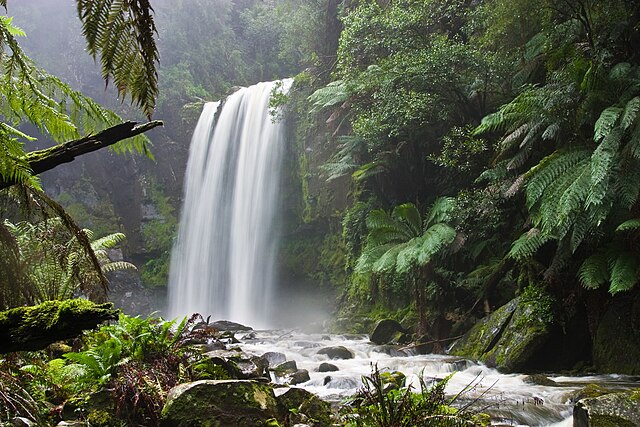Conservation in Australia
Conservation in Australia is an issue of state and federal policy. Australia is one of the most biologically diverse countries in the world, with a large portion of species endemic to Australia. Preserving this wealth of biodiversity is important for future generations. 25% of Australia is managed for conservation.
Rainforests such as the Daintree have immeasurable value.
Hopetoun Falls and other unique wilderness areas are protected within reserves and parks.
Land clearing in Australia
Land clearing in Australia describes the removal of native vegetation and deforestation in Australia. Land clearing involves the removal of native vegetation and habitats, including the bulldozing of native bushlands, forests, savannah, woodlands and native grasslands and the draining of natural wetlands for replacement with agriculture, urban and other land uses.
The distribution of Banksia largely coincides with areas of high population density, and large tracts of Banksia woodland are cleared for urban expansion every year. In this photo, land clearing for housing threatens the Banksia menziesii species in Canning Vale, Western Australia.
Coffee plantations in Queensland ca. 1900 contributed to the loss of a lot of native forests
Smaller fires prevent undergrowth building up and providing fuel for larger fires, Northern Territory, 2000
Logging in the Toolangi State Forest






